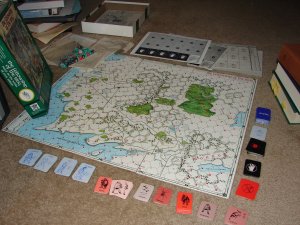Here it is, the most frustrating Super Mario Bros. level ever. I can’t stop laughing–it’s sadistic level design at its best. Every time the player (who must have the patience of a saint) gets past one hurdle, he’s rewarded with sudden and unavoidable death from another angle.
It actually reminds me of one of the less enjoyable aspects of many early text and graphic adventure games. It wasn’t uncommon in some adventure games to be killed without warning by a trap or enemy that you had no way of anticipating or avoiding. The only way to avoid death was to reload the game (you did save your game, right?) after having been killed and steer clear of whatever room or activity resulted in instant death. While the threat of unannounced death did add a certain tension to the gaming experience, it wasn’t fun at all to be killed without receiving any advance warning that your character was in danger.
The manuals for these games were filled with exhortations to save your game often to minimize the rage you would feel upon having to replay giant chunks of the game after an unexpected death. As adventure games became more sophisticated, designers got better at providing advance warning (sometimes subtle, but any warning was better than none) that your character was in mortal danger. It was much easier to accept your character’s death if you at least felt that you had been given a fair shot at avoiding it.
These days, most games have some form of auto-save mechanic that saves your progress for you as you advance, reducing the need to continually save the game manually. But back in the old days, when we had to walk uphill to school both ways and there was only enough space for eight saved games on an Infocom disk and death could come at any time for any reason… well, I guess I’m glad we’ve moved beyond that particular aspect of the Good Old Days.
 This link is for my old pal
This link is for my old pal 
 Today I want to reminisce about one of the games from the very earliest strata of that gaming pile–a curious and nearly-forgotten boardgame with which I was obsessed throughout junior high, and which eventually served as an entrypoint for me to the world of roleplaying games. The game is The Fellowship of the Ring, published in 1983 by Iron Crown Enterprises, and–like some of the Iron Crown RPGs I would later play–I loved it, although I didn’t always completely understand it.
Today I want to reminisce about one of the games from the very earliest strata of that gaming pile–a curious and nearly-forgotten boardgame with which I was obsessed throughout junior high, and which eventually served as an entrypoint for me to the world of roleplaying games. The game is The Fellowship of the Ring, published in 1983 by Iron Crown Enterprises, and–like some of the Iron Crown RPGs I would later play–I loved it, although I didn’t always completely understand it.